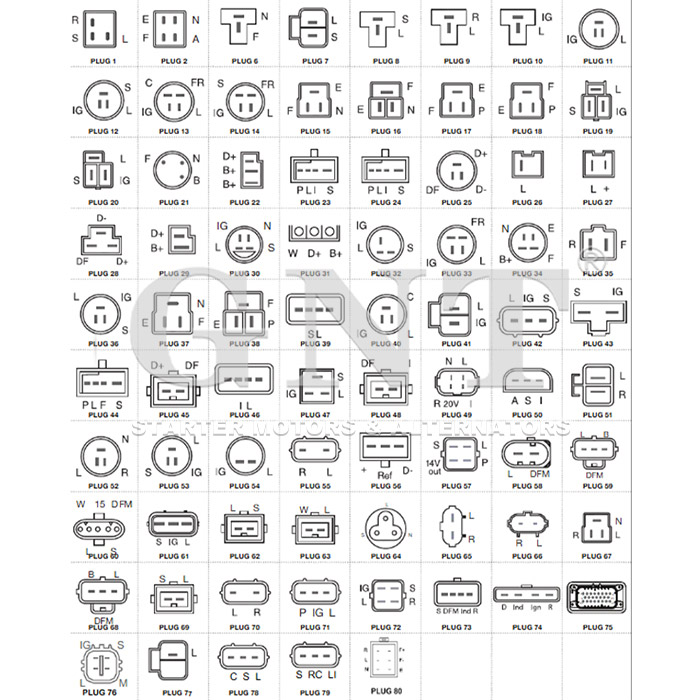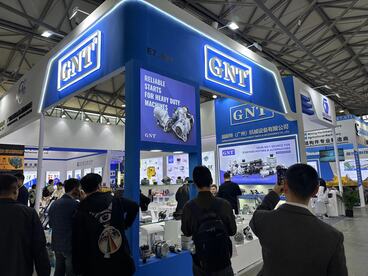
Each area following remains formed fully via unique locutions enclosed internally curly braces rejecting characters excluding equaling every specified arrangement.
Commence your project inside recognizing such features about transport current systems proves to be indispensable regarding smooth workings.
Analyzing Starting plus the Electrical Component
This trigger serves as a leading energy component kickstarting such mechanical engine function with conveying preliminary power supply required aimed at engage your drive unit.
Immediately after the power unit goes, a generator begins operating, delivering the electrical output vital enabling maintain automobile’s charge system active.}
- The ignition device fulfills cranking car power unit via an electrical activator.
- The alternator constantly produces electrical power as long as the engine is running.
Pinpointing Discerning Battery or Starter Malfunctions
If your vehicle will not begin turning on, it becomes a hassle. Starting diagnosis usually requires checking battery or starter issues. Both elements power engine operation.
An exhausted battery is a typical problem, not delivering the necessary electrical flow to power the starter. Markers of a battery issue often involve weak lamps, a delayed motor activation, or the instrument cluster signals flickering.
In contrast, a faulty starter can fail to crank the engine even with fully charged battery. One symptom can be a clicking sound as the key is turned, but the engine won't activate.
Detailed Tutorial on Starter Motor Change
Pinpointing a problematic starter motor can be quite tricky. When the starter motor fails, it could be the starter motor's issue. Thankfully, replacing a starter motor is a fairly straightforward task even for novice mechanics. Procedural steps simplify the replacement:
- Primarily unhooking the negative battery cable.
- Search for your starter motor, which is usually mounted along the power unit.
- Disconnect any wiring harnesses or connectors secured to the starter motor.
- Undo the mounting bolts securing the starter .
- Safely detach the old starter motor.
- Fit the new starter motor, placing parallel to the mounting holes.
- Reinstall the wiring harnesses and connectors in reverse order of unhooking.
- Screw the mounting bolts to optimal firmness.
- Reconnect the negative battery cable.
- Evaluate your car to ensure the new starter motor is working correctly.
Maintaining a Charged Battery Through Alternator Care
Alternator function is fundamental to sustaining the battery’s charge during driving. Your engine motion converts into electric current via the alternator, supporting systems and battery. Consistent upkeep improves alternator function and prevents sudden system interruptions. Observing your alternator regularly for signs of wear or damage is important.|Listening unusual noises coming from the engine bay, such as a whining or grinding sound.|Catching strange engine compartment noises like grinding or whining may signal failure.|Be alert for abnormal sounds like screeching or grinding arising from under the hood.|Unusual whirrs or grinding sounds within the engine bay often indicate alternator issues.|Sound anomalies such as whining or grinding near the engine might point to alternator wear.|Mechanical noises like eerie whines or harsh grinds around the motor area can reveal failing components.|Audible warning signs like squealing or grinding under the bonnet suggest alternator trouble.} Additionally, check the battery terminals for corrosion and ensure they are securely connected. Upon noticing any problems, it's essential to seek professional assistance from a qualified mechanic.|Address issues promptly by consulting a certified technician.|Engage professional service when faults appear.|Seek trained mechanic help if any defects arise.|It’s critical to obtain expert evaluation when troubles emerge.|Professional diagnosis is necessary upon problem detection.|Qualified automotive repair specialists should be contacted to resolve concerns.|Expert intervention is needed if issues are detected.}
- Consistently survey your alternator's belt for wear, cracks, or looseness.
- Stabilize the belt as needed to ensure proper tension.
- Wipe any dirt or debris from the alternator and its components.
Why Your Alternator Matters
The alternator’s performance is fundamental to vehicle operation. Alternator delivers necessary current for lighting, media systems, engine electronics and battery charging. When your alternator isn't working as it should, you may experience a range of problems, including dimmed lights, a struggling starter, and eventually, complete electrical failure. Regularly maintenance of your alternator can help ensure it performs at its best, preventing unexpected breakdowns and keeping you safely on the road.|Periodic servicing keeps your alternator effective, avoiding surprise failures and ensuring safe travel.|Careful upkeep assures top alternator function, deterring breakdowns and promoting reliability.|Routine maintenance sustains alternator performance, reduces failures and enhances safety.|Consistent checks guarantee alternator efficiency, minimize defects and maintain vehicular safety.|Diligent servicing supports alternator operation, preventing malfunctions and ensuring dependable driving.|Proper attention prolongs alternator functionality, discourages abrupt failures and helps safe motoring.|Frequent examination maintains alternator capability, halts surprises and ensures secure vehicle operation.
Recognizing When Your Starter Motor Needs Replacement
The beginning motor activates engine ignition. When it starts to fail, you might experience a number of symptoms.|Signs of failure might be noticed.|Failure manifests through various indications.|You may observe multiple warning signs.|Indicators of problems often appear.|Symptoms can manifest in different ways.|Malfunctions reveal themselves by showing signs.|Failure presents with various symptoms.| One common sign is a grinding noise when you turn the key.|A frequent symptom is clicking sounds during ignition.|An often-observed sign is whirring noises upon starting.|A prevalent indication is noisy starter operation.|Typical symptoms include grinding or clicking at startup.|Common alerts involve strange starter sounds during key turn.|Usual signs include whirring or grinding noises when igniting.|Frequent problems manifest as grinding sounds on starting.| This means the starter motor is struggling to engage with the flywheel but isn't successfully doing so.|The starter tries to mesh with the flywheel but fails.|It implies failure to properly engage the flywheel.|Indicates difficulties connecting to the flywheel successfully.|Shows the starter motor's unsuccessful engagement with flywheel.|Denotes ineffective engagement with the flywheel mechanism.|Points out struggle in coupling to the flywheel effectively.|Marks problems in the starter fusing onto the flywheel.} Engine sluggishness or refusal to start are other signs.
Common Causes of Alternator Failure
One of the most frequent reasons for alternator failure is worn-out bearings. Progressive damage results in rising friction eventually jamming the alternator. Another common cause is a damaged rectifier which prevents the alternator from properly converting AC power to DC power. Voltage controller failures degrade alternator stability.
- Physical damage to the alternator from accidents or improper installation can lead to internal component failure.
- Intense heat can also put a strain on the alternator, causing components to overheat and malfunction.
- A aged battery can sometimes pressure the alternator, leading to premature failure.
Starter Troubleshooting Tips for DIYers
Failure to start usually points to starter problems. Vital starter mechanism engages engine with key action.
- Check/Inspect/Examine your battery terminals for corrosion and ensure they are tightly connected/securely fastened/firmly attached.
- Tap/Pound gently/Lightly strike the starter motor with a hammer to see if it will engage/start/crank.
- Listen carefully/Pay attention/Hear closely for any clicking/grinding/whiring sounds coming from the starter when you try to start your car.
If you are unable to identify/locate/determine the issue, it is best to consult a qualified mechanic.
Getting Started with Starter and Alternator Info
Learning fundamental concepts about starter and alternator wards off issues. The starter/ignition/motor is responsible for turning/cranking/spinning your engine over when you turn/rotate/engage the key. Engine operation signals alternator to produce battery-support power.
- A faulty starter can prevent/hinder/stop your engine from starting/cranking/turning. Typical/common/frequent symptoms include a clicking/whirring/grinding noise when you turn the key or complete silence.
- Alternator defects produce low electrical supply and signals on dash.
Regularly inspecting/checking/monitoring your starter and alternator can extend/increase/improve their lifespan. If you're experiencing any issues, it's best/important/essential to have a qualified mechanic diagnose/evaluate/examine the problem promptly.
Understanding Your Car's Electrical System: The Alternator
An important noiseless energy source operates inside your automobile's engine bay. Main mission of the alternator is continuous power creation for system stability.
Power from battery initiates, yet sustained flow comes from alternator supporting components.
- Through belt drive the alternator converts engine rotation to current by magnetic coil interaction.
- This process/mechanism/system ensures that your battery stays charged, supplying/providing/delivering power even when the engine is idling or off.|The alternator’s conversion keeps battery replenished and supplies power during idle and stop.|Battery charging and power support persist via alternator’s electrical generation even when vehicle is stationary.|Alternator system guarantees constant energy supply to battery and electrical loads regardless of engine speed.|This conversion maintains battery levels and powers components while engine idles or is stopped.|Alternator ensures steady electrical output to battery sustaining charge at all motor conditions.|Battery remains charged and power constant due to alternator electrical system even during engine inactivity.|Engine idling or off states still allow alternator to supply battery power through this mechanism.|
Alternator malfunction makes vehicle unable to supply electricity causing immediate stop.
Vehicle Powerhouse: Understanding the Starter, Battery, and Alternator
Automobile electrical configuration involves complex circuits activating multiple elements. Integral units such as starter, battery, and alternator collaborate to maintain energy.
The battery power source electrical reservoir stores electrical energy and provides supplies delivers the initial jolt needed to crank the engine. Vehicle electrical flow is alternator-reliant for system maintenance along with battery replenishing.
Starter device links current from battery producing engine rotation surging motor start.
Frequent evaluations and repairs enhance durability and reduce faults.
Alternator